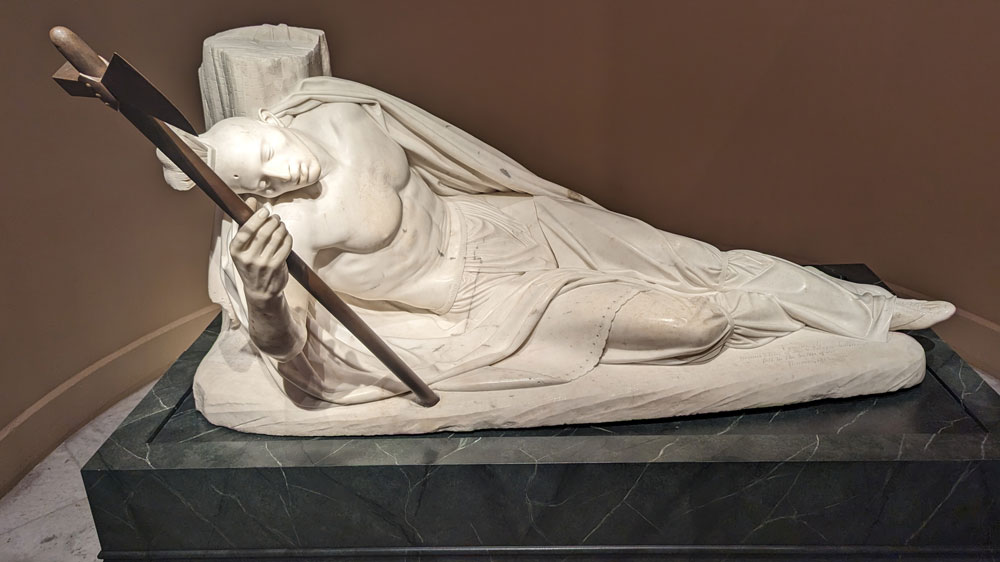
Commenting on a segment about modern air travel, a television news host recently stated that although she was not afraid of death, she did not want to die “terrified”. Titanic, (Scenes from the British Wreck Commissioner’s Inquiry, 1912), now streaming from Chicago’s Court Theater, can be said to be a story about how 1490 people came to die terrified in the frigid waters of the North Atlantic on April 15th, 1912.
A few weeks after the maritime catastrophe, formal inquiries were conducted in both New York and London to find out how and why the luxury liner, whose captain and crew knew ice was present in the water, came to sink after striking an iceberg.
Using the verbatim transcripts from the London proceedings, playwright Owen McCafferty wrote his story from the English perspective; with most of the play’s six exceptional actors performing multiple roles. One hundred years ago, speech differences in the United Kingdom based on class, education and regional dialect were likely even more pronounced than they are today. Dialect Coach Eva Breneman was brought in to oversee the accent, phrasing and timber signatures for the production. The range of color that could be heard in the spoken word because of her work was astounding. It was the actor’s jobs, through the guidance of director Vanessa Stalling, to add nuance, emotion and temperament to their characters’ voices; as well as dialect authenticity. The success in accomplishing each of these goals so completely is one of the most admirable achievements of this performance. Coupled with the actual words of those involved in the inquiries, the variety of the speech patterns added another dimension of reality to the powerful reenactment.
Although the inquiry was not and was never intended to be a trial, based on this representation, it often felt like one. Disturbing revelations surfaced shortly after the accident. Most of the people who drowned were third class passengers. There were far fewer lifeboats on board than passengers and many of boats deployed while the ship was sinking had ample room for more passengers. Most perplexing and damning was the fact that the ship was maintaining its standard cruising speed of 22 knots (25 mph) while sailing through waters so prevalent with ice that, according to the lookout, “you could smell it”.

Intimate dramatic intensity best describes the atmosphere of the set used to bring the London inquiries to life. The actors, usually seated three across, each at his or her own desk and wearing headsets, sat facing the audience. Dressed in black, with a black void behind them, a clean warm spotlight lit their faces and torsos. The effect suggested a hushed clandestine closeness. It drew you in and most significantly, the closeness intensified the weight of the words being spoken.
Testimony of survivors highlighted the costs of mankind’s personal and societal imperfections. The hazards of both became evident as more and more information unfolded about why the ship was traveling so fast through dangerous waters, how the evacuation was so poorly conducted and the glaringly suspect nature of actions taken by some of the crew and passengers after the ship sank. Considered human frailties, their behavior revealed common character flaws that, under the right conditions, can prove deadly. Arrogance, pride, and cowardice were the most noticeable culprits in this tragedy. Privilege also seemed to play an outsized role in aggravating the calamity. Allowing a civilian, because of his status as an owner of the ship, to become a “super captain” with the power to circumvent protocol and authority sounds unthinkable; but may have happened. Downplaying the severity of the collision to third class passengers with the intent of containing their responses constitutes homicidal deceit and was also alleged to have occurred.
As much as we’ve heard or thought we knew about one of history’s most notorious sailing disasters, Titanic, (Scenes from the British Wreck Commissioner’s Inquiry, 1912) looks at the sinking from a very human level. Heroes were in short supply on that April day 109 years ago. You’re left to wonder whether enough has been learned to avoid something equally regrettable happening today.
The play culled questions and testimony from several days of the two-month long investigation. Other than Alys Dickerson who maintained her role as the Commissioner of the proceeding throughout the play, the other five actors collectively played 14 different parts. Ms. Dickerson, Nate Burger, Ronald Conner, Xavier King, Andy Nagraj and Bri Sudia filled those roles with unerringly impressive ability. As officials tried to parse out truth and fact from survivors who could be evasive, resentful and duplicitous; you could hear committed determination on one side and muted indignation, singed with remorse, on the other. For a spectator, the Court’s Titanic is drama at its best.
Titanic, (Scenes from the British Wreck Commissioner’s Inquiry, 1912
Streaming through July 11, 2021


